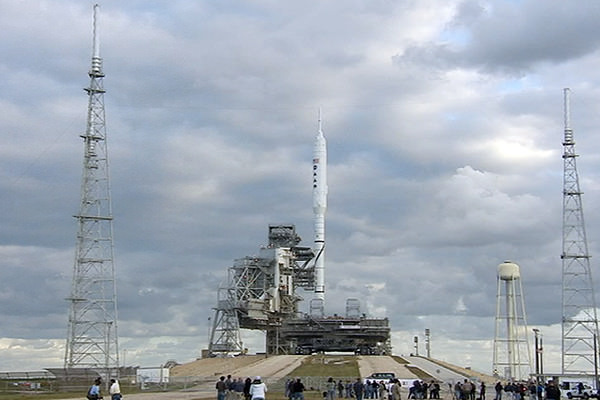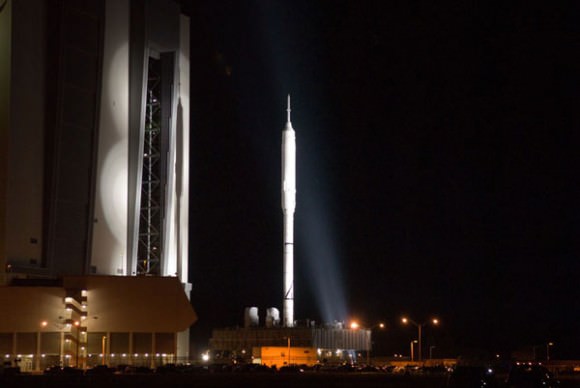

Ares at the pad. Credit: NASA
[/caption]
“The Stick” made it out to launchpad 39B without falling over. I have to admit, NASA’s new rocket looked tall, super-skinny and pointy (as Dr. Brian Cox described it), as it rolled out on the crawler transporter. Somehow, it seems the Ares I-X should be wider. It’s definitely tall — at 100 meters (327 feet,) it is 43 meters (143 feet) taller than the space shuttle. But appearances aside, this is an historic occasion. For the first time in more than a quarter century, a new vehicle is sitting out at the launchpad at Kennedy Space Center in Florida.
More pictures below:


The test flight of the Ares I-X rocket is scheduled to launch at 8 a.m. on Oct. 27. This test flight will provide NASA an opportunity to test and prove hardware, models, facilities and ground operations associated with the Ares I launch vehicle. Mission managers will finalize the launch date at a flight readiness review on October 23.
And in case you aren’t familiar with what the Ares I-X is for, the test flight will check out this un-crewed, modified Ares I configuration with a sub-orbital development test that will launch the rocket 43 km (28 miles) in altitude. This is the first developmental flight test of the Constellation Program, which includes the Ares I and V rockets, Orion and the Altair lunar lander.
Unless it all gets axed. The Augustine Report comes out on October 22.
For more great images of Ares I-X, checkout Robert Pearlman’s collection of rollout pics over at collectSPACE, or Spaceflightnow.com’s gallery of Ares I-X images from this morning.
Burrowing under soil opens up a whole new world, especially when that soil is on…
Quasars are the actively feeding supermassive black holes at the hearts of galaxies and can…
This Hubble image shows a supernova named SN 2022aajn in a distant galaxy about 600…
It seems everyone is talking about the Moon and everyone wants to get their foot…
We can't help ourselves but wonder about life elsewhere in the Universe. Any hint of…
When a star like the Sun dies, it puffs away its outer layers, leaving behind…